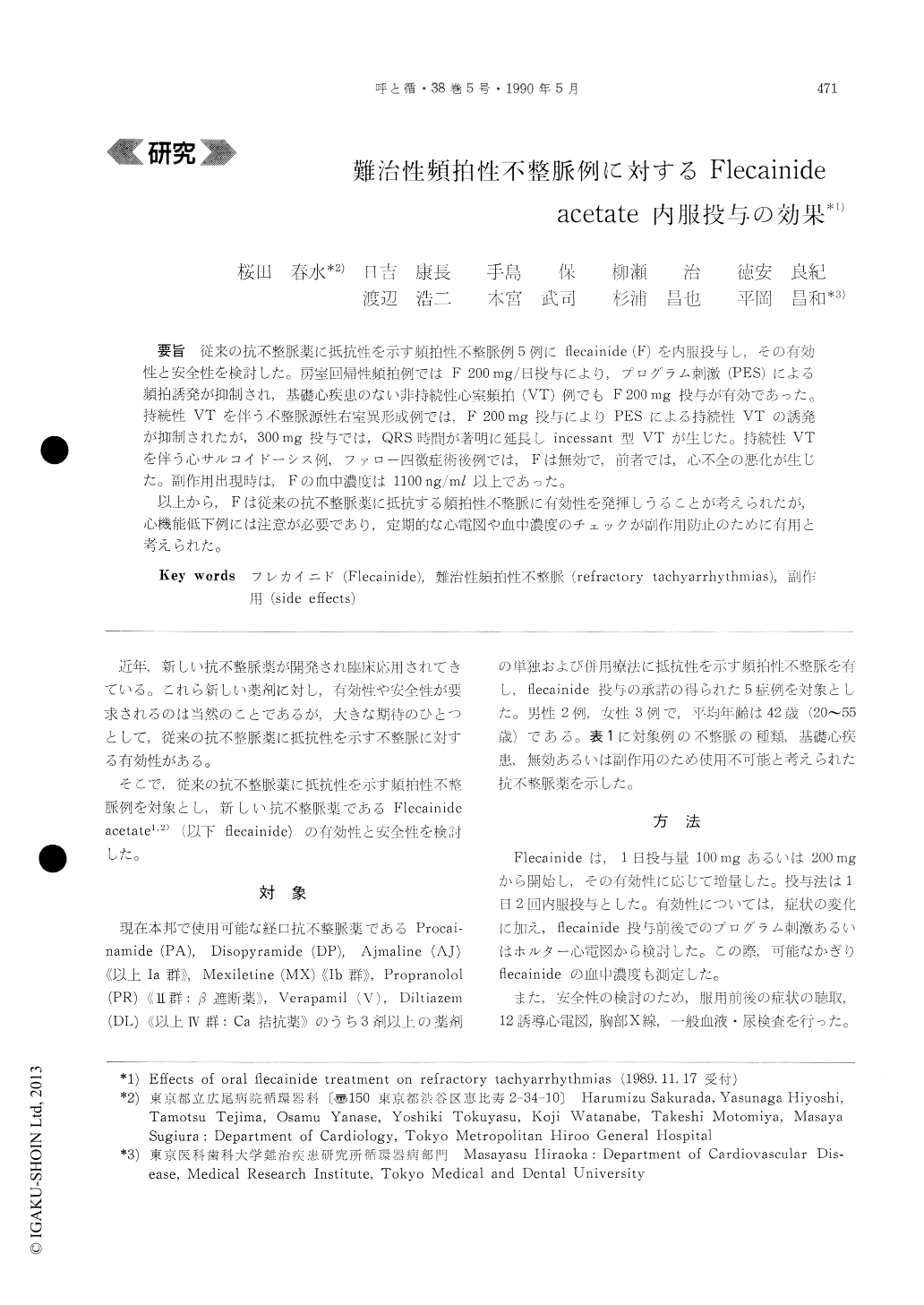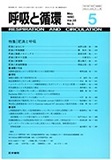Japanese
English
- 有料閲覧
- Abstract 文献概要
- 1ページ目 Look Inside
従来の抗不整脈薬に抵抗性を示す頻拍性不整脈例5例にflecainide(F)を内服投与し,その有効性と安全性を検討した。房室回帰性頻拍例ではF200 mg/日投与により,プログラム刺激(PES)による頻拍誘発が抑制され,某礎心疾患のない非持続性心室頻拍(VT)例でもF200 mg投与が有効であった。持続性VTを伴う不整脈源性右室異形成例では,F200 mg投与によりPESによる持続性VTの誘発が抑制されたが,300mg投与では,QRS時間が著明に延長しincessant型VTが生じた。持続性VTを伴う心サルコイドーシス例,ファロー四徴症術後例では,Fは無効で,前者では,心不全の悪化が生じた。副作用出現時は,Fの血中濃度は1100 ng/ml以上であった。
以上から,Fは従来の抗不整脈薬に抵抗する頻拍性不整脈に有効性を発揮しうることが考えられたが,心機能低下例には注意が必要であり,定期的な心電図や血中濃度のチェックが副作用防止のために有用と考えられた。
Oral flecainide treatment was given to five pa-tients who were refractory to conventional anti-arrhythmic agents. The five patients included one with atrioventricular reentrant tachycardia (AVRT), one with non-sustained ventricular tachycardia (nsVT) and three with sustained VT (sVT). Fle-cainide produced favorable responses in patients of AVRT, nsVT and sVT with arrhythmogenic right ventricular displasia (ARVD). In the case of AVRT, flecainide exhibited a preventive effect on tachycardia induced by programmed electrical sti-mulation (PES). In the case of nsVT, flecainide markedly reduced the number of VPC and abolished the VT on the Holter ECG. In the case of sVT with ARVD, sVT was not induced by PES after the flecainide. Long-term treatment with flecainide on these three cases produced complete prevention of tachycardias. As an adverse effect of flecainide, an aggravation of congestive heart failure was recognized in one case with cardiac sarcoidosis. PQ interval and QRS interval in all the cases were prolonged after flecainide.
The results indicate that flecainide is a useful antiarrhythmic agent for tachyarrhythmias refracto-ry to treatment with conventional drugs.

Copyright © 1990, Igaku-Shoin Ltd. All rights reserved.


